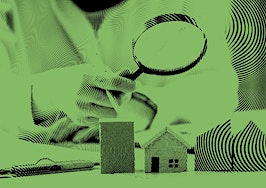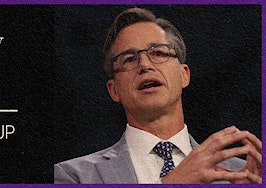In these times, double down — on your skills, on your knowledge, on you. Join us Aug. 8-10 at Inman Connect Las Vegas to lean into the shift and learn from the best. Get your ticket now for the best price.
The most tried-and-true strategy for generating listings is geographical farming. Most agents don’t know where to start or how to effectively add value in a way that leads to consistent listing opportunities.
This article breaks down where to start, what to do, and how to dominate a local neighborhood or geographical area.
1. Identify potential neighborhoods
The first step is to identify potential neighborhoods to farm. The reason I mentioned neighborhoods instead of a neighborhood is that you should evaluate multiple neighborhoods to identify the one or two with the best opportunity for you and your business to prosper.
I would encourage you to think about who your ideal buyer client is, or if there might be a certain buyer client that you or your business naturally attracts. If you have a certain type of buyer (first-time homebuyer, active-duty military, investor, move-up buyer, luxury, etc.), then odds are you will naturally connect with the homeowner in the neighborhoods or areas where your buyer clients buy homes.
Once you’ve identified a few neighborhoods to consider, you are ready to move to the next step.
2. Evaluate the competition
Understanding the competition in a specific neighborhood provides a more detailed understanding of the opportunity each neighborhood presents. Evaluate whether there is a dominant listing agent already in place for the neighborhoods you are considering. It’s not that you are afraid of competition, but if you are considering multiple neighborhoods, why not choose the one with less competition?
Pull the active, pending, and sold details from the MLS for the subject neighborhood over the past twelve months. Make a list of the listing agents and the total number of listings each listing agent took over the past 12 months.
Is there an agent who listed over 20 percent of the homes that are currently active, pending, or that have sold in the last twelve months? If so, odds are they have been actively farming that neighborhood. This doesn’t mean you can’t find success, but it does mean it will be harder and might take longer.
If, however, your evaluation reveals that the listings are spread out over different agents, then there is a readily available opportunity for you to become the dominant agent in that neighborhood. Once you’ve identified a few neighborhoods lacking a dominant agent, you are now ready to evaluate the opportunity each neighborhood presents.
3. Run the numbers
Running the numbers is the process of evaluating your break-even point and what the potential returns might be. The first step is to gather your trailing 12-month sales numbers and the total number of homes in the neighborhood. For this example, I will use a hypothetical neighborhood with 400 homes in the neighborhood that had 30 homes sold in the past 12 months with an average sales price of $450,000.
Next, evaluate what an average listing taken and sold would mean to your business financially. If the average sales price is $450,000 and the listing side commission rate is 3 percent then the gross commission on an average listing sold would be $13,500. For this example, if your commission split rate is 75 percent, then your net commission after split would be $10,125.
I like to plan for an average of $2 per month or $24 per year per household in marketing expenses for farming a neighborhood. This $2 per month is an average for direct mail, personal promotion to the owners, and special event expenses. I will get to the marketing shortly, but for now, let’s evaluate projected expenses to understand if this neighborhood makes financial sense to pursue.
If there are 400 homes in the neighborhood and you estimate an average ad spend of $2 per household per month, then the monthly marketing expense/investment would be $800 per month or $9,600 for the year. Based on an average listing sold in the neighborhood generating $10,125 (evaluation above) and the estimation of $9,600 in annual marketing expenses to effectively farm the neighborhood, you simply need to generate one listing sold in the neighborhood to break even for the ad spend for the year.
If you do the activities mentioned below, it would be extremely unlikely that you would not generate, at a minimum, one listing sold in the neighborhood for the year.
Based on the following marketing plan, you should conservatively expect to take a minimum of 10 percent of the listings in the neighborhood in the first year. Although you often take a much larger percentage of the listings and attract several buyers by taking these listings, on the conservative side, let’s evaluate this farming effort if you simply take 10 percent of the listings in the neighborhood in the next 12 months.
Based on taking three listings (10 percent of the 30 that sold in the past twelve months), that would generate an estimated $30,375 in net commission with an estimated expense/investment of $9,600. That equates to a 216 percent return on your investment based on this conservative evaluation.
It appears you’ve found a winner, so now you’re ready to formulate a winning marketing plan.
4. Plan your marketing to the homeowners
The key to generating listing opportunities is to become known as the local expert for the neighborhood. This is done through a process of marketing in a way that helps the homeowners to recognize you (get to know you), then add value in a way that shifts their perspective to liking you, and ultimately your marketing should lead to you being the most known, liked and trusted real estate agent in the neighborhood.
There are several ways to accomplish this, but it all starts with direct mail. Direct mail should include a minimum of a monthly postcard or letter. The key is to have a plan that garners their attention and that adds value.
The rhythm for monthly mailers is to start with a quarterly market update that provides active, pending and sold details for the quarter. In the second month I prefer sending a “Who you are” postcard that shares why you love selling real estate or a testimonial piece that shares a personal testimony from a listing client you sold recently. For the third month, I suggest sending a piece that highlights any upcoming events for the community or area.
Then in month four, simply restart the above-mentioned types of mailers each month for the next three months and in this pattern for the rest of the year. Each of these cards should include a call to action to receive a valuation update or utilize a QR Code to direct them to your website or squeeze page to see photos and details of homes that are currently for sale in the neighborhood.
Ideally, in the first three months of farming a neighborhood, you would send a direct mail piece every two weeks instead of the monthly mailer mentioned above. This is to jump-start your recognition in the neighborhood. This would involve keeping the rhythm of monthly mailers mentioned above and supplementing the additional weeks with more testimonials, past personal sales details, or more brand-building stories about why you love the homeowner’s neighborhood.
Once you have become known in the neighborhood, you will have opportunities to do additional marketing. Sponsoring a food truck night (with co-sponsors to help offset costs), hosting a family photo day where you provide a photographer for the day, organizing a hayride for kids in the neighborhood, or an outdoor movie night in a community common area are just a few ideas on how you can continue to market yourself and build relationships in the community.
5. Stay consistent
Consistency is key. The reason I did the evaluation over a year is that committing to a year gives your marketing efforts the time needed to produce results. Farming is not about a one-time marketing push. It is about a consistent marketing effort that builds trust and momentum over time. The more consistent you are, the better the results you can expect.
6. Become active in the neighborhood
Activity breeds opportunity, so ask yourself what you can do to become more active in the neighborhood you are farming. This can be accomplished in several ways.
I’ve seen agents walk their dogs daily in the neighborhood where they were farming, taking the opportunity to speak to people they encounter along the way. It works. I’ve seen agents coordinate community toy drives for local charities around Christmas. Even though they didn’t do it solely to generate listings, it generated listings.
Whatever your creative mind can think of to become active in the community you are farming, it will deepen relationships and ultimately lead to more listings.
7. Amplify your successes
Nothing creates trust more than an owner seeing a neighbor list with you and seeing you get the home, like their home, sold. Take advantage of the opportunity in the listings you procure to not only get the listing sold but to showcase your marketing and the service you provide your listings.
Make sure you do the basics of sending Just Listed and Just Sold cards to everyone in the neighborhood. Make sure you not only host an open house but personally invite every neighbor to the open house, whether through a mailer, phone call, or door knocking. Personally, call the neighbors after a sale to let them know about the sale and how it will affect their home’s value.
If your seller is active in the community, ask them if you can host a going away party for them and invite all the neighbors just prior to closing. If you work with the buyer of a home in the neighborhood, ask them if you can host a housewarming party for them. Make sure to invite all the neighbors.
Activity breeds activity, so make sure you are amplifying any activity, whether listing or selling a home in your farm area.
Many agents use the excuse that they are not sure if something will work, so they never act on the activity. In the case of geographical farming, it works. It’s not a matter of whether it works, it’s a matter of whether you will invest the time and money to let it work for you and your business. A consistent flow of listing opportunities is what awaits the agent who executes geographical farming. Be that agent.













